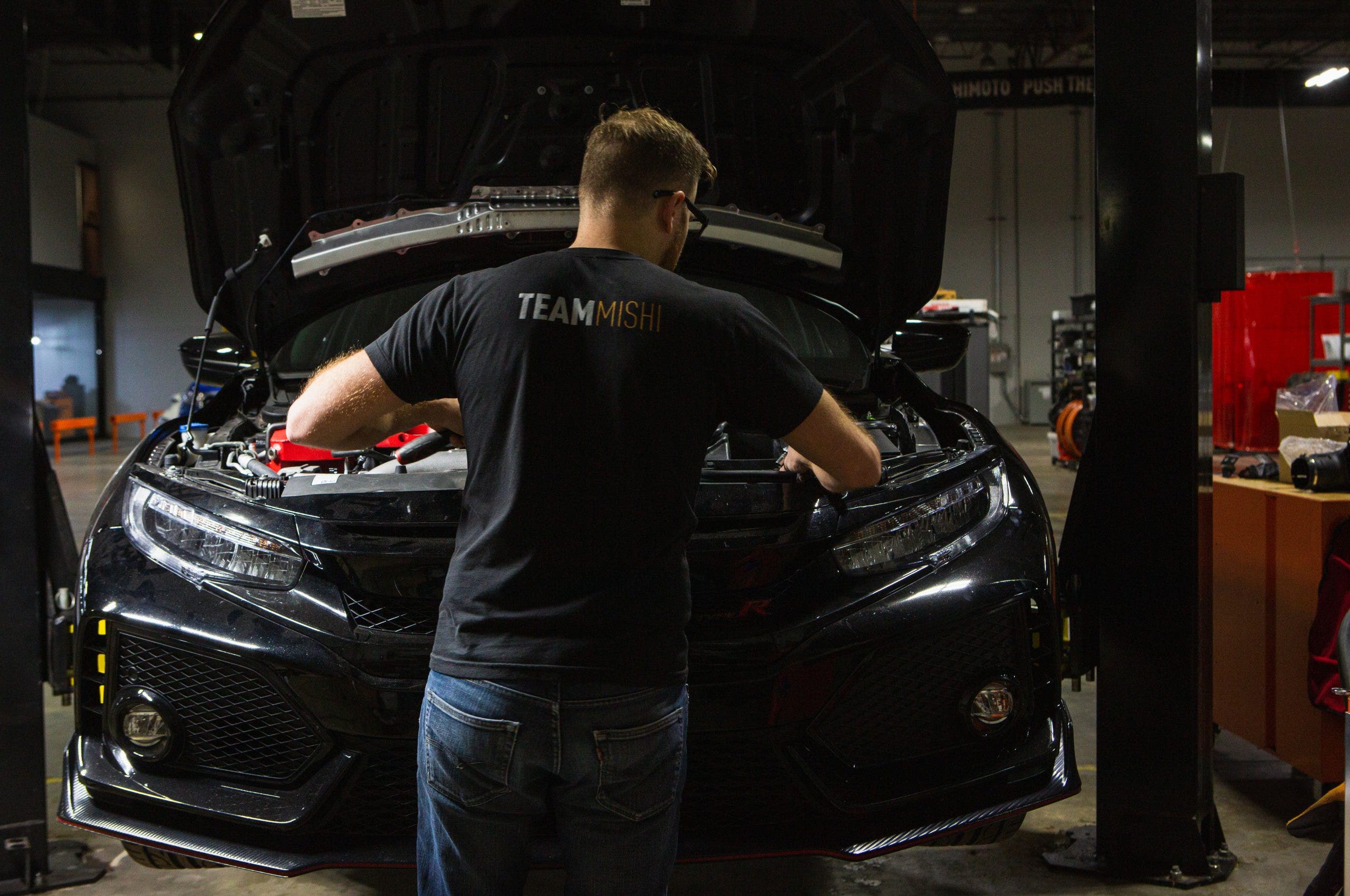
New School Cool - Performance Aluminum Radiator R&D - Concept, design, and Production Sample
One of the many wonders of science and engineering is its ability to progress continuously. Ten years ago, the mention of a bone-stock Honda Civic setting front-wheel drive track records would be met with ridicule. Sure, they had some formidable variants, but it was the intro of the K20C1 and armada of aero in the FK2, and now the FK8, Honda wanted their Civic to be taken more seriously. Even with their leaps and bounds in such a short time, the mighty K-series still has some issues staying cool, which is where we step in.
Honda isn't the only company out there continuously improving. If you might remember, after our initial evaluation of the cooling system, our best course of action was to add to or beef up other parts of the system, specifically with our Secondary Race Radiator and Oil Cooler kits. Now with some added elements in our radiator fin playbook, our sights are set again on the CTR's primary radiator.

It's almost characteristic of Honda to aim the exhaust headers straight toward the front of the vehicle in their front-wheel drive applications. It's not the worst option on the naturally aspirated engines, but adding a turbo can turn up the heat under the hood. In the FK8's case, the turbo is stacked right up on the back side of the cooling stack, which is a cause of concern for residual heat, especially at low speeds or when stopped. Air flowing through the engine bay will help mitigate any heat soak, but it's known that this Civic does have a lack of proper flow through the front of the vehicle. We have some options that would boost heat regulation, but first, we extracted our Civic's stock unit for a closer examination.



This form of construction is the norm in OEM applications. We have a lightweight tube-and-fin core with a pair of plastic end tanks crimped to each end. When it comes to manufacturing products and components on the scale that Honda is, production costs need to be kept down, so the price of your budget track monster doesn't skyrocket. These radiators provide adequate cooling for the Type R; however, they can fall short for those demanding more than the occasional spirited drive or typical daily commute. For that, we needed to go bigger.

Jason is already planning on putting our latest iteration of offset fins to use on our new design. However, Jason still needs a full design to go along with those fins. Typically, this is where we would dive into our fitment prototype, but since we're much further along, let's get right into our first production sample.


At first glance, the updates are pretty obvious. We started from the ground up and went with a full aluminum construction to maximize the durability of the CTR's cooling system. As the stock unit ages, the plastic end tanks become much more susceptible to cracks and leaks that can leave you stranded. We decided to make sure that our TIG-welded end tanks matched the layout of the stock design to ensure a smooth installation and direct fit within the build envelope on the front of the Civic. With those in place, it was down to the core design.

Jason made sure to tighten up the fins as much as possible on our core. Fin density is vital when it comes to heat exchangers since having increased contact with the ambient air means for a more efficient transfer of heat. In addition to packing in more fins, we employed the use of offset fins. This type of fin design forces the ambient air through the core diagonally, which theoretically increases the thickness of the core and provides a better exchange of heat.

Speaking of the core's size, the fins weren't the only aspect of this radiator to get an overhaul. When it comes to heat exchangers, bigger is better. Though the build envelope is tight, Jason was able to bump out the core thickness to 40mm, which, with our other adjustments in dimensions, equates to a 48% increase in core volume and 102% bump in external fin surface area. Those combined with our increased coolant capacity are the perfect remedy to ensure improved engine temperature regulation.

They say necessity is the mother of all invention, and we enthusiasts have a need for uninterrupted speed. Just like Honda was able to create a version of the Civic that was able to set front-wheel drive lap records, we here at Mishimoto were able to work on the means of keeping it running cool.
Make sure that you upgrade your FK8's radiator today!
2017+ Honda Civic Type R Performance Aluminum Radiator

Thanks for Reading!
-Nick











